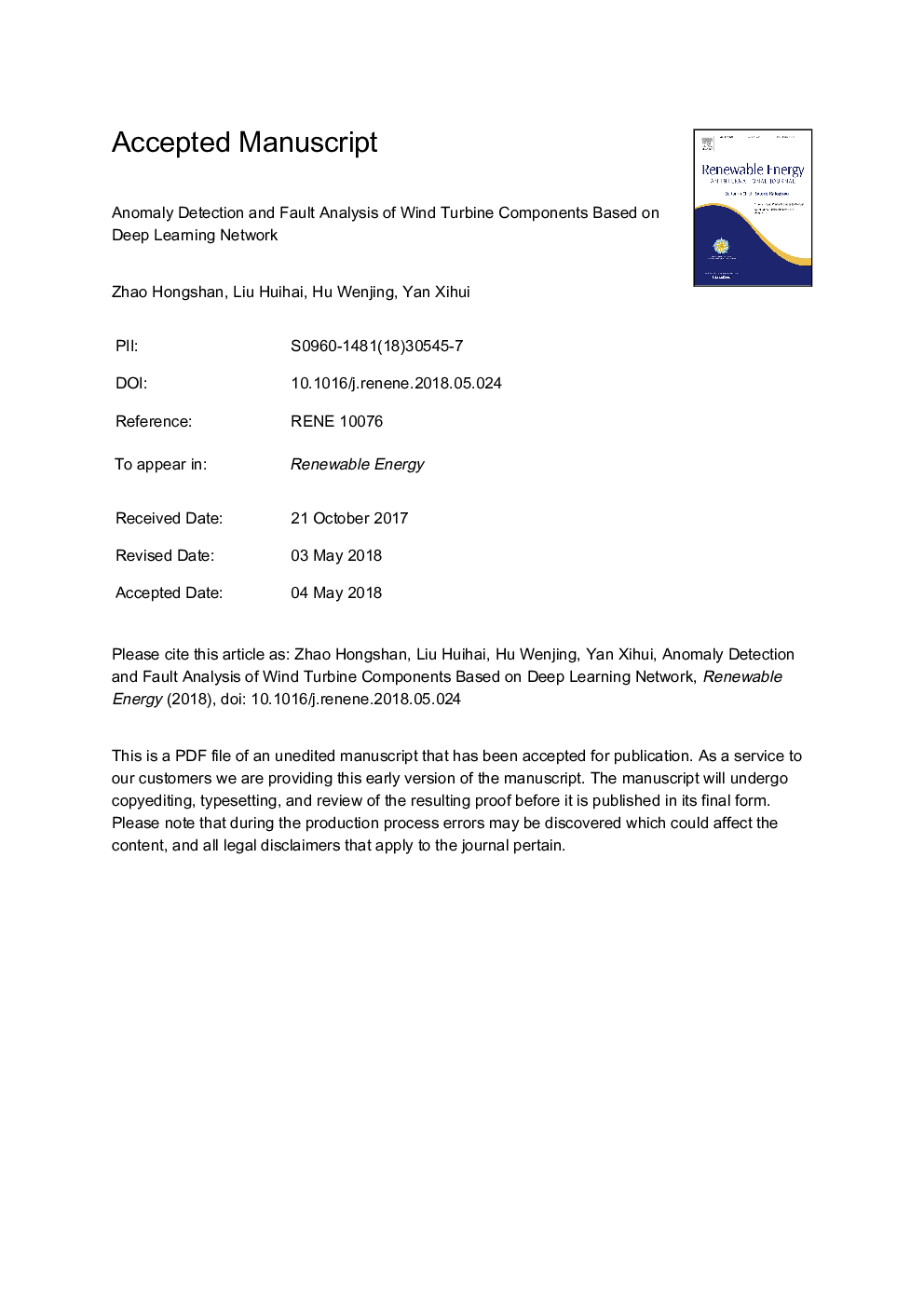| Article ID | Journal | Published Year | Pages | File Type |
|---|---|---|---|---|
| 6764164 | Renewable Energy | 2018 | 17 Pages |
Abstract
Continuous monitoring of wind turbine health using early fault detection methods can improve turbine reliability and reduce maintenance costs before they reach a catastrophic stage. To achieve anomaly detection and fault analysis of wind turbine components, this paper proposes a deep learning method based on a deep auto-encoder (DAE) network using operational supervisory control and data acquisition (SCADA) data of wind turbines. First, a component DAE network model using multiple restricted Boltzmann machines (RBM) was constructed. Previously collected normal SCADA data from wind turbines were used to train this multilayer network model layer-wise to extract the relationships between SCADA variables. Then, a reconstruction error (Re) was calculated by using the DAE network input and its output reconstruction value, which was defined as the condition detection index to reflect the component health condition. Due to the acute changes and disturbances of wind speed in actual operation, the calculated detection index always has an extreme distribution that can cause false alarms. Therefore, an adaptive threshold determined by the extreme value theory was proposed and used as the rule of anomaly judgement. The method can not only implement early warning of fault components but also deduce the physical location of a faulted component by DAE residuals. Finally, the effectiveness of the proposed method was verified by some reported failure cases of wind turbine components.
Related Topics
Physical Sciences and Engineering
Energy
Renewable Energy, Sustainability and the Environment
Authors
Hongshan Zhao, Huihai Liu, Wenjing Hu, Xihui Yan,
